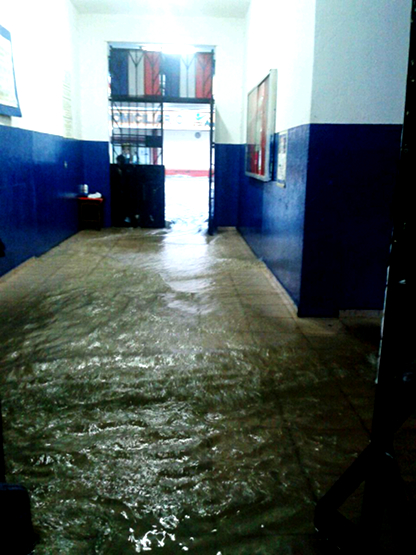
Citing damage from Metro vibrations, government will demolish historic school
by Eric Jackson
The Escuela Republica de Venezuela is the closest large public school to the seats of government power — the legislature and the Presidencia — and has a fabled history. It has been the point of gathering and departure for many a teachers’ protest, including the 1979 march against proposed education reforms that was a milestone in the movement to end the dictatorship. It has housed various offices and is now home to both the elementary school that bears the school’s name and the Instituto Comercial Bolivar, one of the city’s smaller public high schools. On February 2, less than two weeks before the start of the 2017 school year, the Ministry of Education announced that the building would be demolished and that its students and teachers would be relocated or scattered to other schools.
The reason given was a study that the ministry received from the engineering department at Panama Technological University that indicated that core samples from support pillars and other critical structures at the school indicated that they were in poor shape and made the building dangerous to use. The reason for the problem, ministry projects director Mario Caparroso told Telemetro News, was that while the damage is not obvious to the naked eye, vibrations from the Metro commuter trains have been crumbling the old school’s structures.
The inconvenient announcement prompted protests by teachers and parents. Education officials had the study in their hands for about a month before announcing the document’s contents and the ministry’s decision. The short notice has fed suspicions that the government just wants to sell the land or that the danger has been known for longer than announced without disclosing the problem to educators and the general public. The ministry denies plans to sell the land and is working to relocate the two schools. One partial option mentioned is to transfer the Instituto Comercial Bolivar to the Primer Ciclo Panama school building, which is only used for part of the day. The rental of temporary school facilities or the dispersal of students to other schools are also being considered.
One concern that’s being addressed by neither the government nor the corporate mainstream media is what this news could mean for the Metro. If the vibrations from the trains — or from the system’s earlier construction — have damaged the school so badly that it must be torn down, then other structures along the route may have also been damaged. That could impose some liabilities or reinforcement costs. At the very least it would call for some resources to be directed toward special inspections. The Metro goes over and under various sorts of terrain, but typically landfilled areas — through which part of Line 1 passes — are more sensitive to seismic vibrations. The published studies, however, are generally about earthquake risks rather than the shocks caused by trains, trucks or construction. But over the centuries the relatively stable Panama City has had the occasional serious earthquake. A building weakened by other causes might not be able to withstand one of those.
~ ~ ~
These announcements are interactive. Click on them for more information.










